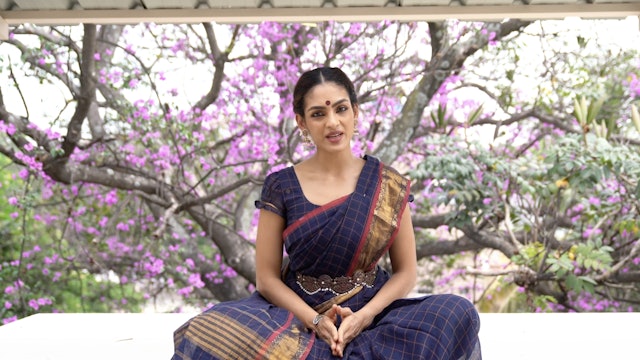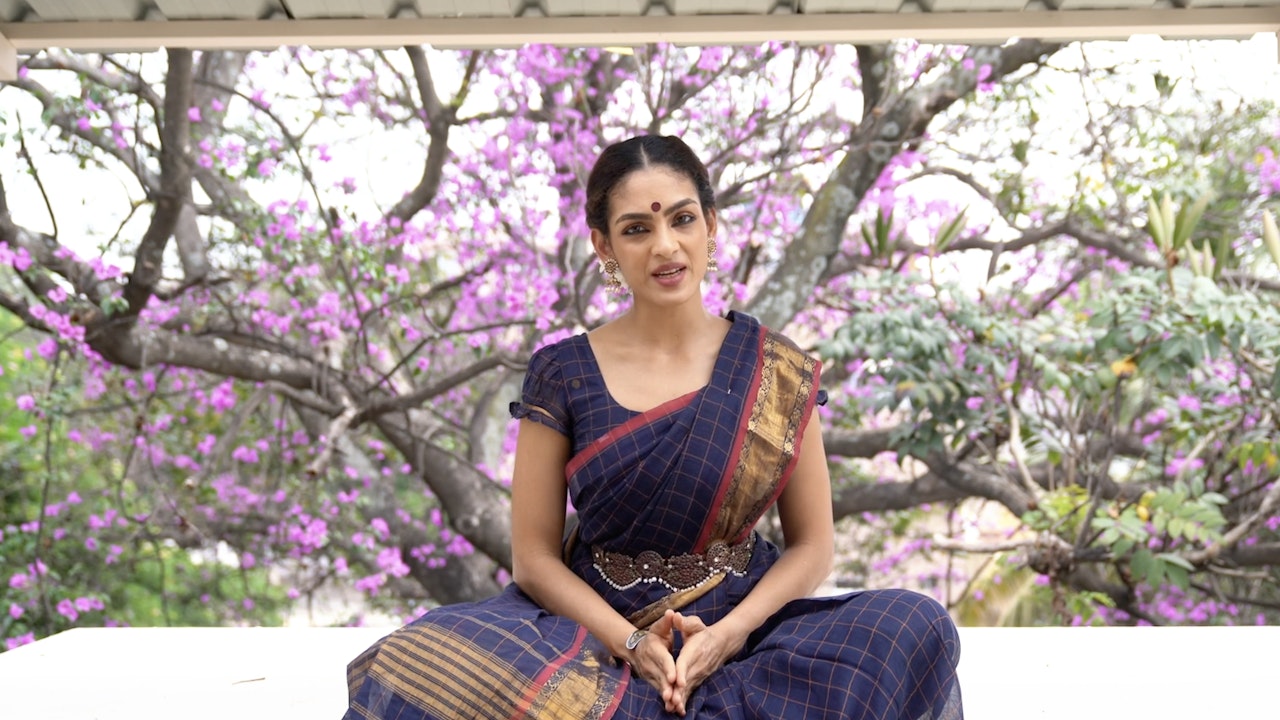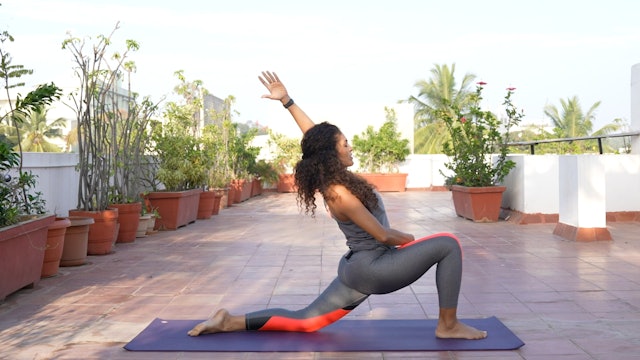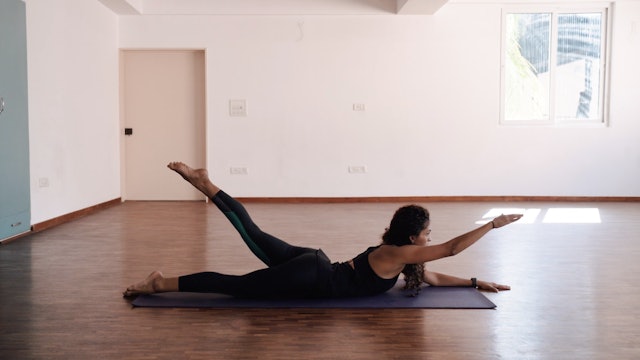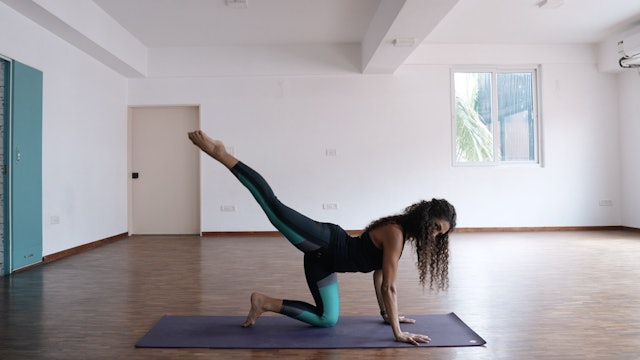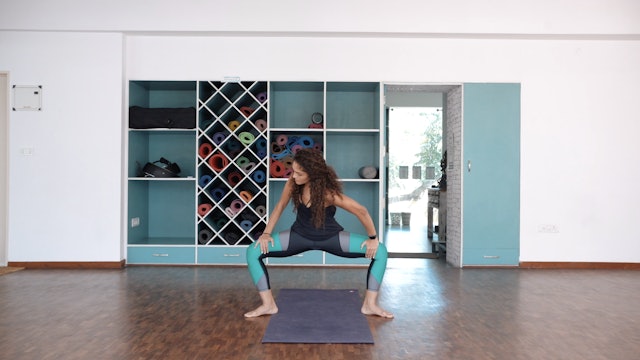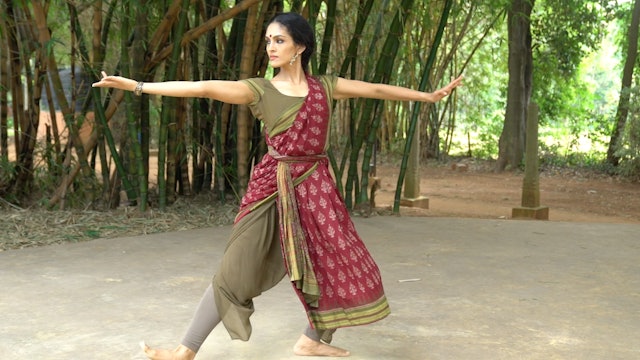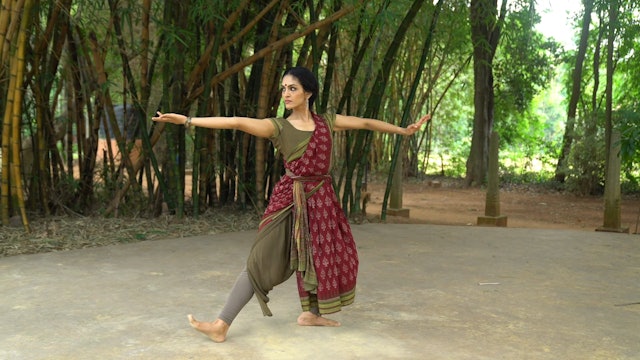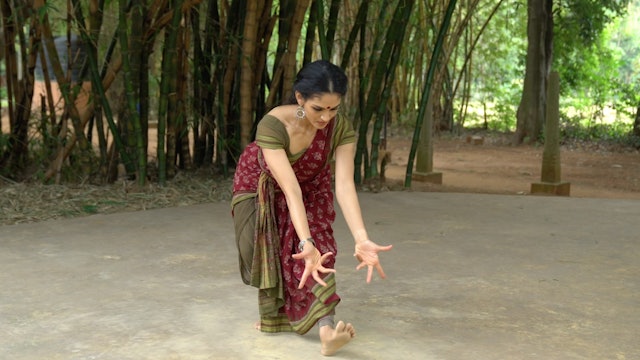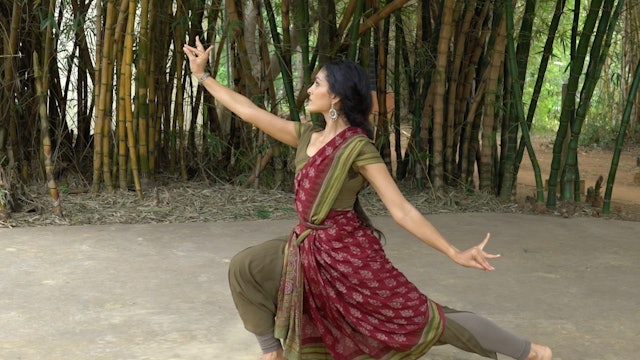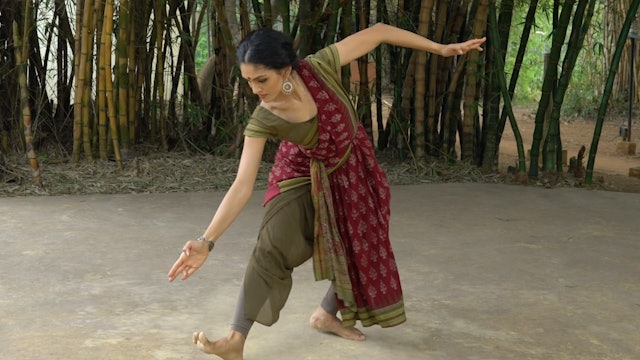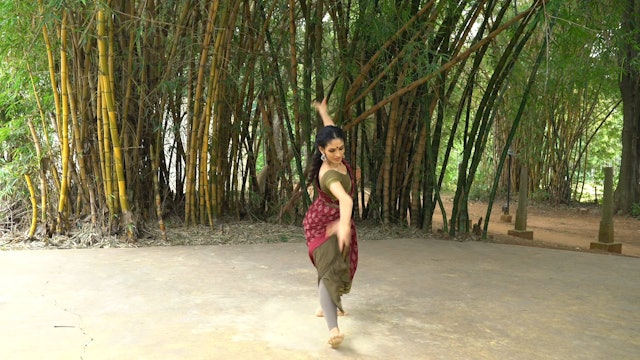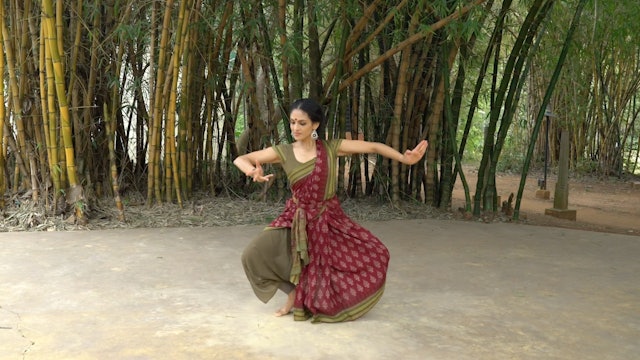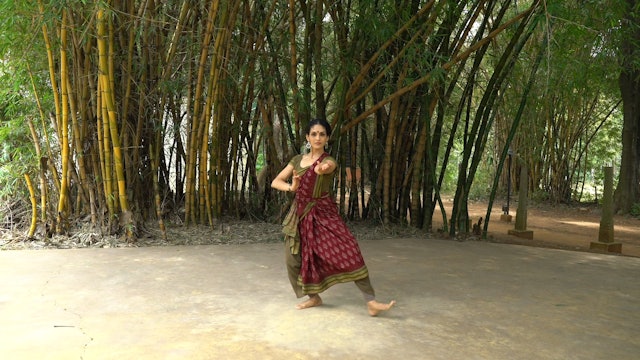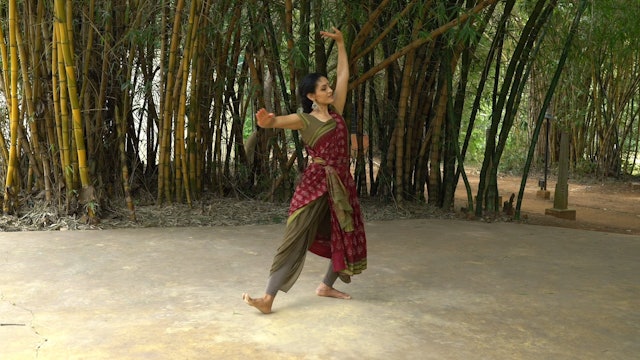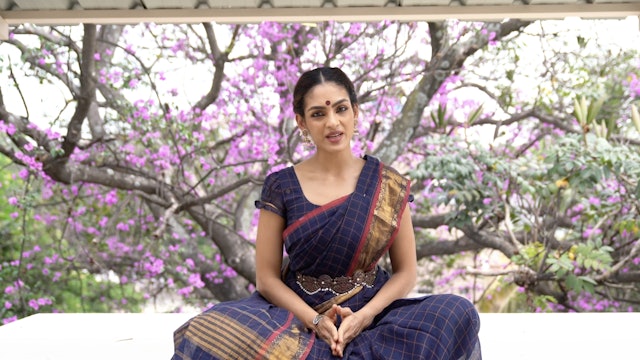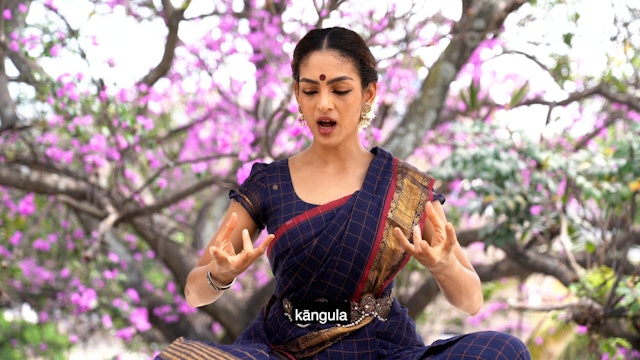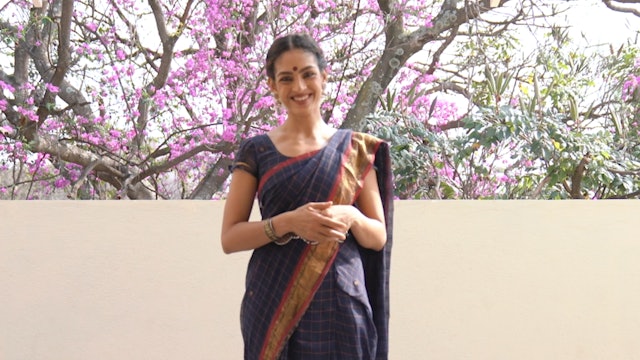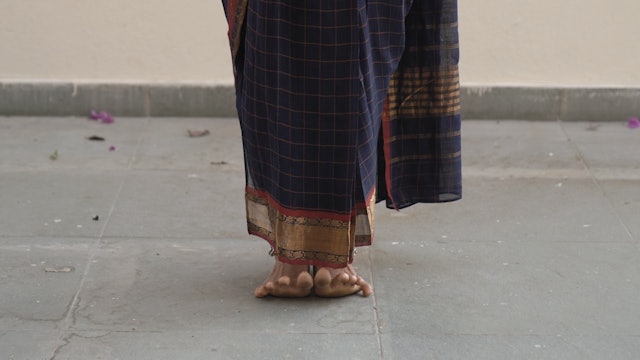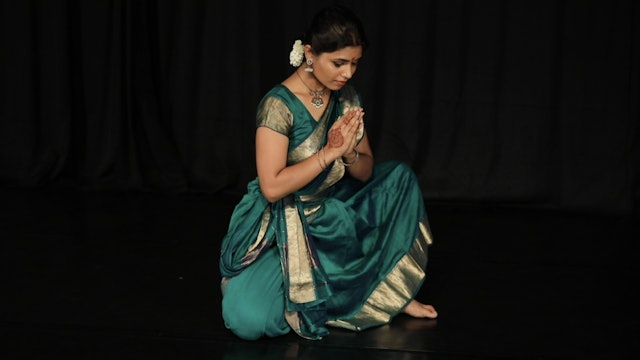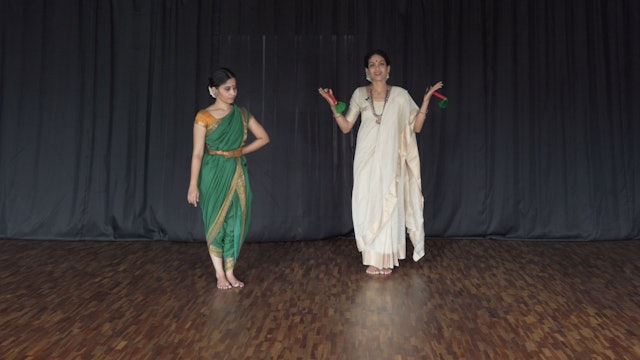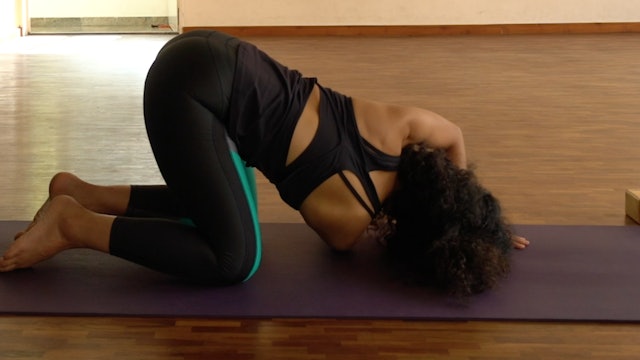-
The complete Raadha Kalpa Warm Up: Level 2
This Warm- up adds a few more variations to the previously introduced warm-up and expects that your strength has progressed, so please make certain that you have practised the following though the past months, atleast 5 times each, slowly with awareness before doing this warm-up.
Legs and core 1...
-
Musical Series: Core A
This sequence of exercises reinforces ideas that have already been introduced in the previous instructed series for the Core muscles. It is recommended to start on the musical series only once you have practised the instructed series over several months, so you already have internal awareness of ...
-
Musical Series: Gluteals 1
This sequence of exercises reinforces ideas that have already been introduced in the previous instructed series for the Gluteals, the stability muscles in the leg/hips. It is recommended to start on the musical series only once you have practised the instructed series over several months, so you ...
-
Musical Series: Basic Quads 1
This sequence of exercises reinforces ideas that have already been introduced in the previous instructed series for the Quadriceps, the muscles in the legs that play a big part in movement. It is recommended to start on the musical series only once you have practised the instructed series over se...
-
Naatadavu 1
This Adavu has a stretching action in the leg where the foot is flexed and the heel is placed on the floor. The alignment of the hip bones is important in this. The turn-out and stability in the Araimandi position of the dancer must have developed by the time he/she starts the Naatadavu. If this ...
-
Naatadavu 2
This Adavu has a stretching action in the leg where the foot is flexed and the heel is placed on the floor. The alignment of the hip bones is important in this. The turn-out and stability in the Araimandi position of the dancer must have developed by the time he/she starts the Naatadavu.
The se...
-
Naatadavu 3
The third Naatadavu stretches the leg out to the front. If you are unable to keep your back straight when doing this, please refer to the flexibility section and practice the tips for forward bends and try again.
-
Naatadavu 4
The 4th Naatadavu expects a little more stability in the body. Please practice any of the Strength sections that work on lunges and squats, to achieve a deep lunge in this Adavu.
-
Naatadavu 5
The 5th Naatadavu is fairly easier to execute if you are clear with the 3rd and 4th Naatadavu. The bend is in the diagonal, and the length of the back must be maintained. The Swastikam introduced in the second Naatadavu is used again. So as long as there has been clarity so far, this will be an e...
-
Naatadavu 6
If you are unable to get up from the Muzhumandi position on the beat in the 3rd speed, please revisit the leg strength exercises in the exercise section. Pay special attention to the side squats. Also practice the hip- opener exercises that are present in the flexibility section.
-
Ta hata Jumtari ta Adavu
The "Ta hata jumtari ta" Adavu, is named after the syllables that are used in the practice of the Adavu. This practise is common amongst most lineages of Bharatanatyam.
The Adavu is a combination of various movements. It has the 'di, di tai" action with the Tattu and Naatu, from the muktaya ada...
-
Teermana Adavu 1
The Theermana or Makutadavu, is placed at the end of a Korwe or Jathi in specific rhythmic patterns, to create an ending.
The leg is either placed outstretched directly in front or at a diagonal of 45 degrees. The foot is flexed and the heel strikes the floor. In the Raadha Kalpa method we begi...
-
Theermana Adavu 2
The Theermana or Makutadavu, is placed at the end of a Korwe or Jathi in specific rhythmic patterns, to create an ending.
The leg is either placed outstretched directly in front or at a diagonal of 45 degrees. The foot is flexed and the heel strikes the floor. In the Raadha Kalpa method we begi...
-
Theermana Adavu 3, variation
The Theermana or Makutadavu, is placed at the end of a Korwe or Jathi in specific rhythmic patterns, to create an ending.
The leg is either placed outstretched directly in front or at a diagonal of 45 degrees. The foot is flexed and the heel strikes the floor. In the Raadha Kalpa method we begi...
-
Samyukta Hasta
The Asamyuta hastas, as described in the Abhinaya Darpana are 28 in number.
These Hastas are used primarily communicate meaning gesturally, The Viniyogas in the Abhinaya Darpana describe a number of possible gestural implications for each Hasta.
Please refer to the Shloka below for pronunciat...
-
Asamyukta Hasta
The Asamyuta hastas, as described in the Abhinaya Darpana are 28 in number.
These Hastas are used as embellishments in adavus as well as to communicate meaning gesturally, The Viniyogas in the Abhinaya Darpana describe a number of possible gestural implications for each Hasta.
Please refer to...
-
Ćarañāguli bheda Introduction
The toes are considered one of the Upāngas, or minor limbs.
The movements are used primarily to communicate meaning in the context of gesture.
-
Ćarañāguli bheda Shloka
The toes are considered one of the Upāngas, or minor limbs.
The movements are used primarily to communicate meaning in the context of gesture.
Please refer to the Shloka below for pronunciation. Please note that the separate movements of the head when put together in a Shloka form 'Sandhis', or...
-
Varnam, "Adi Shivane"
Varnam, "Adi Shivane"
Raga: Todi
Adi Tala
Composer: K.N.Dandayudapani Pillai.
Choreography: Guru Narmada (Jathis) , Adapted by Rukmini Vijayakumar
Language: TamilThe Varnam speaks from the perspective of a Nayika that is longing to see Lord Shiva.
P: Adi shivanaik-kANavE Ashai koNDEnaDi
nIti ... -
Varnam, "Adi Shivane" : Part 4 B
Varnam, "Adi Shivane"
Raga: Todi
Adi Tala
Composer: K.N.Dandayudapani Pillai.
Choreography: Guru Narmada (Jathis) , Adapted by Rukmini Vijayakumar
Language: TamilThe Varnam speaks from the perspective of a Nayika that is longing to see Lord Shiva.
This video goes through the second Jathi of t...
-
General mobility
This is a great session to do on a day when you feel tight or sore. It opens up your body without expecting too much of it. You can also do it before you start a warm-up or after a strength or dance session. It is a session that is safe to practice early in the morning.
